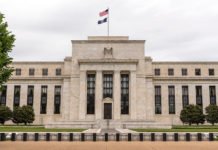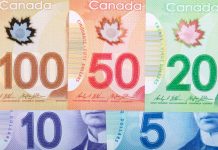Key insights from the week that was.
In Australia, the Monthly CPI Indicator fell 0.3% in January, leaving the annual rate unchanged at 3.4%yr. Goods prices – which constitute the bulk of the new information at this point in the quarter – reportedly fell 0.2% in the month, marking three monthly declines in this category since October. The main driver of the softness in headline inflation, however, was the often-volatile holiday travel and electricity prices. Highlighting the effectiveness of Government rebates in limiting the pass-through of energy inflation to households, electricity prices would have been up 15.3%yr sans rebates versus 0.8%yr. Based on the partial information presented in this update, risks to our Q1 CPI forecast of 0.7% (3.4%yr) look balanced. Next month will provide an update on more services components.
While the disinflationary process will offer more support for households in time, the consumer is currently in a fragile state. In January, retail sales rose 1.1%; but, given weakness in prior months, annual growth is just 1.4%yr, well below the rate of inflation and population growth. The interplay between employment, wage and price growth will be critical for spending over the coming year. Perceptions of wealth and comfort with the liabilities held against housing assets are also critical. For a deep-dive into the prospects for Australia’s housing market and its implications for sentiment, see our latest Housing Pulse.
In the lead-up to next week’s Q4 GDP report, the ABS also released two partial indicators of investment this week. Construction activity lifted 0.7% in Q4, in line with expectations. The easing in the growth pace is consistent with a maturing cycle, as the impetus from pandemic-era disruptions and supportive policy measures, which drove the initial ‘jump’ in project starts, fades. The detail continues to highlight a strong contribution from public works (+4.9%), centred on infrastructure projects. Momentum in the private sector is a stark contrast (–1.0%) due to broad-based weakness in new dwelling construction and renovations, partially offset by continued gains in non-residential building work.
The Q4 Capex survey subsequently reported a 0.8% lift in capital expenditure. While an upside surprise relative to our expectations for the quarter, momentum was clearly lost from H1 2023 to H2 2023. Equipment spending, which feeds into GDP, fell 0.1%, while building and structures rose 1.5%. On spending intentions, the fifth estimate for 2023/24 CAPEX plans remained optimistic, up around 12% compared to the fifth estimate a year ago. In our view, that implies a 10% rise in nominal CAPEX spending over the financial year – though given the strength of inflation in the sector, this likely equates to flat real spending over 2023/24.
Factoring in this partial information and the significant decline in hours worked, we have revised down our Q4 GDP forecast and now anticipate a flat result for the quarter. Our Q4 GDP preview is available at Westpac IQ. Taking a longer-term view, Chief Economist Luci Ellis’ essay this week investigates the lingering effects of the pandemic and evolving structural dynamics for activity and inflation.
Over in the US, the PCE deflator was as expected in January, prices rising 0.3%. Durable goods prices’ contribution was effectively nil in the month, while a further decline in energy prices saw non-durable goods subtract from headline inflation. For both headline and core, revisions to the December outcome (revised down from 0.2% to 0.1%) further eased the path for annual inflation, now 2.4% and 2.8% respectively from 2.6% and 2.9% in December. Overall, PCE inflation remains on track to reach target around mid-year.
The PCE release also reported that consumer incomes jumped 1.0%mth in January. However, this upside surprise was the result of a one-off lift in government transfers, 2.6%mth. Disposable personal income, which nets out taxes and transfers, instead grew 0.3%mth, in line with H2 2023. Real consumer spending meanwhile edged down 0.1%mth driven by a 1.1% decline in goods consumption as services remained robust. From a year ago, spending is now up only 2.1%, a below-trend rate. A low savings rate and soft real income growth point to sub-par momentum hence.
In Asia, Japan’s CPI eased to 2.2%yr in January driven by declining energy prices and easing food prices. Government subsidies alongside easing import prices (Japan imports most of its food) are aiding inflation’s deceleration. The Tokyo CPI, which is released weeks prior to the National CPI, tends to be a good predictor of the National result. However, the gap between the two series has grown in recent months, suggesting a degree of stickiness is emerging outside the capital. As incomes tend to be lower outside capital cities, persistence in inflation there is likely to have a disproportionate effect on spending.
Finally, to the just-released February China NBS PMIs. Both the manufacturing and services variants were broadly in line with expectations and the January outcomes, at 49.1 and 51.4 respectively. For manufacturing, output was down slightly, but new orders and employment were unchanged. Employment was also unchanged for services. Lunar New Year anecdotes point to more consumers being willing to spend; but to see this trend sustained and per capita consumption lift, incomes need to be on a steady uptrend. A little forward-looking optimism over household wealth wouldn’t hurt either. How investment and production begin the new Lunar Year will be of great significance













